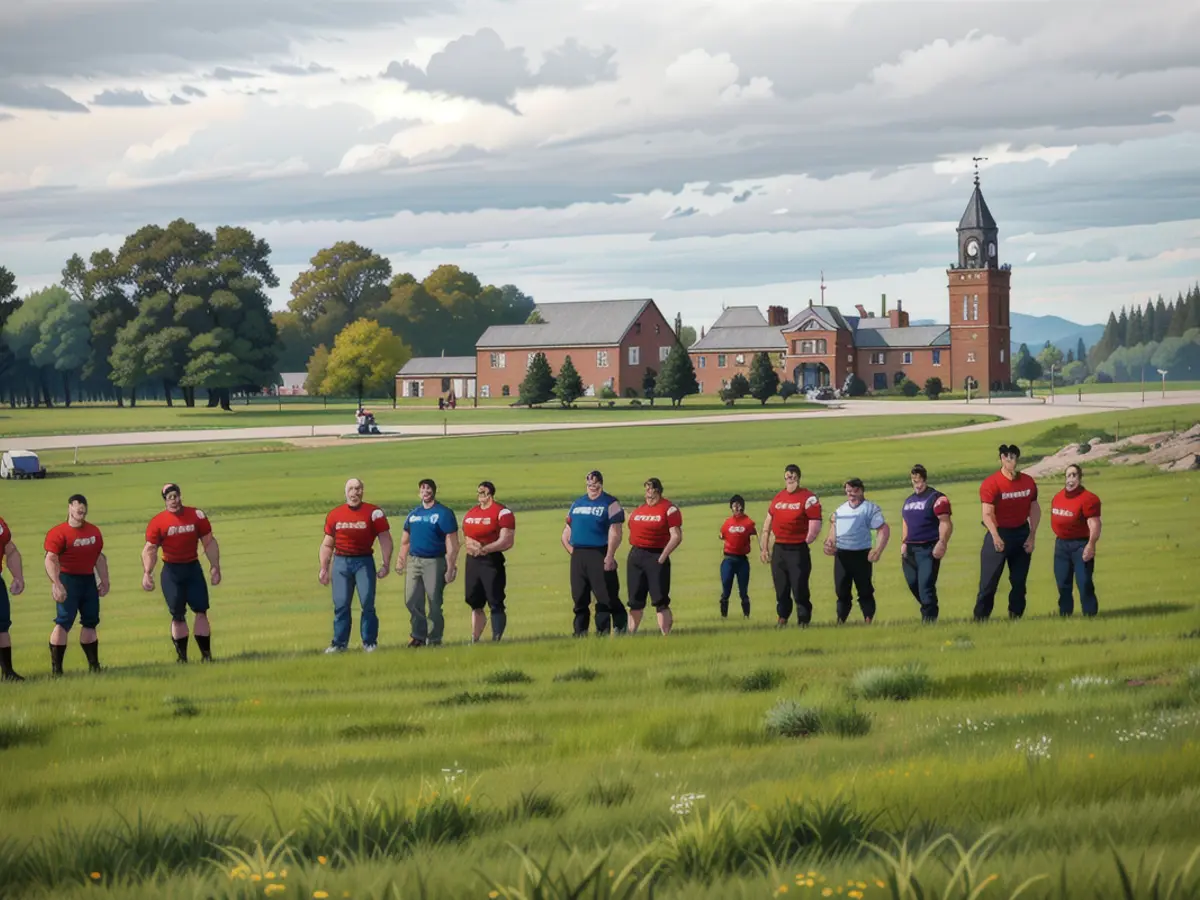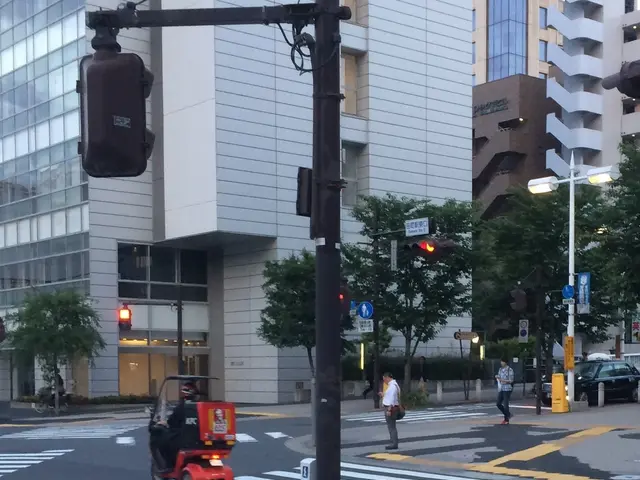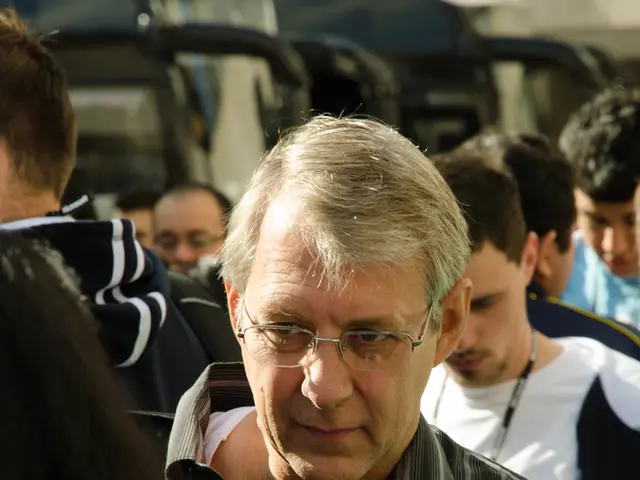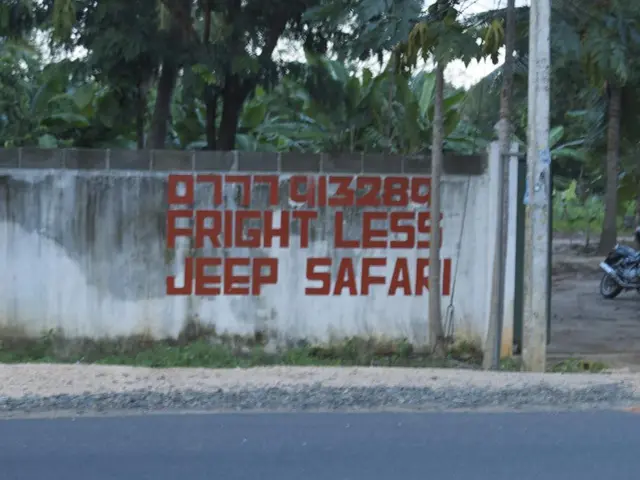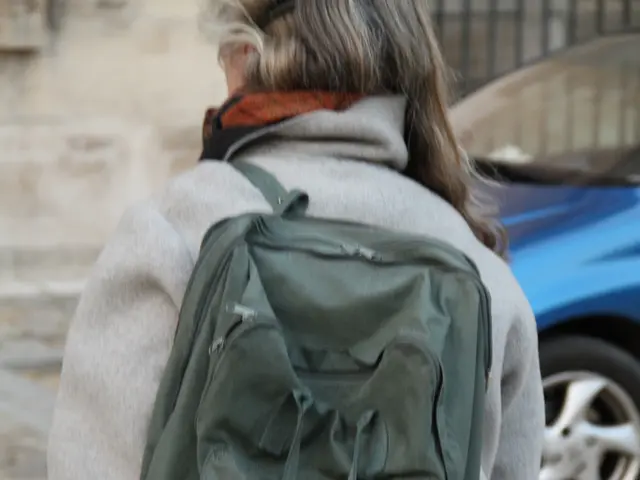A Year Since Arian: The Ongoing Wave of Empathy After the Bremervörde Mystery
A Year Post Arian Inquiry: "Torrent of Assistance" - Charitable wave sweeps nation following Arian's hunt, a year on
In the heart of Bremervörde, the echoes of a unique hunt linger, stirring a sense of unity and empathy. "The wave of compassion and strong camaraderie continues to resonate - be it within our emergency services or amongst the local community," a spokesperson for the fire department shared, a year after Arian's disappearance.
Unlocking the enigma of Bremervörde
Six-year-old Arian went missing from his home on April 22, 2024. In an unprecedented operation that united the entire region, hundreds of emergency services, volunteers, and, occasionally, the military combed the area day and night. Advanced tools like search dogs, drones, boats, a helicopter, and even a Tornado aircraft were employed.
Investigations led by the police revealed a worldwide unusual search effort, specifically designed with Arian's autism in mind. The emergency services went the extra mile, setting off fireworks, singing children's songs, hanging up balloons and candies, all while avoiding volatile circumstances for the child. Tragically, Arian was found deceased in a field just a few kilometers from his home at the end of June, with no signs of foul play.
Paying homage privately
The tragic loss of Arian left an indelible mark on all those involved. To acknowledge his family's grief, a public memorial has been ruled out. "The profound loss of Arian has deeply impacted us all, and our thoughts and prayers remain with his loved ones," a spokesperson for the city confirmed.
A new chapter in emergency service collaboration
In the wake of this emotional experience, emergency services have continued to work closely together, partaking in various memorial events. Fire and police departments also reviewed the search for Arian internally. "The collaboration between all the involved units was already well-rehearsed, but was further strengthened by this intense deployment," emphasized the fire department spokesperson. "This joined effort under challenging circumstances has fostered greater understanding and trust amongst us."
Equipping for future challenges
Building upon this shared experience, emergency services invested in advanced technology, such as drones. The police have already announced an increase in the number of drones at their disposal. The county fire department has also established an "operational drone unit," accessible to the entire county during emergencies. This investment in drones was not a reaction to Arian's disappearance but rather an ongoing commitment to remain prepared for future challenges.
- Bremervörde
- Empathy
- Fire department
- Tornado
- Police
- Drone
- Emergency service
- Military
- Helicopter
Navigating Searches for Autistic Children
- Discretion in Searches: Minimizing loud noises and sensory triggers to make the search more child-friendly[5].
- Paying Attention to Detail: Carefully inspecting enclosed spaces and unusual hiding spots[5].
- Community Collaboration: Encouraging the public to report sightings via 110, without engaging directly with the child, as autistic children may not respond well to strangers[5].
For up-to-date information on missing-child cases, official channels like hessenschau.de or local police announcements would be the best sources[5].
Enrichment Data:
Overall: Searches for lost autistic children often necessitate specialized emergency protocols, as exemplified in recent cases across Germany. While the search currently unfolding in Weilburg centers around Pawlos (6), who went missing on March 25, 2025, the methods deployed demonstrate the complexities of locating autistic children. This includes strategies like using drone thermal imaging, devising silent searches, and encouraging discreet community involvement[5].
Key elements in such searches:- Drone usage: Thermal cameras and aerial surveys help cover vast areas without disturbing the child with noise[5].- Emergency service coordination: Authorities tailor their approach, requesting the public to avoid direct interaction and instead report sightings promptly[5].- Cross-regional cooperation: Cases like Arian (Bremervörde, 2023) and Pawlos exposure this collaborative effort between local police, firefighters, and autism specialists to address challenges such as atypical hiding behaviors and sensory sensitivities[3][5].
The mention of Bremervörde may refer to prior cases (e.g., Arian), as current search updates revolve around Pawlos in Weilburg.
Emergency Service Protocols
- Silent searches: Maintaining quietness to prevent potential sensory stress[5].
- Environmental focus: Prioritizing investigations in enclosed spaces, unusual hiding spots, and areas that might offer calm to the child[5].
- Public guidelines: Encouraging the public to report sightings via 110 without approaching, as autistic children may react negatively to strangers[5].
For real-time updates, official channels like hessenschau.de or local police announcements would provide the latest details[5].
- Following the unfortunate disappearance of Arian in Bremervörde, the local fire department has emphasized the importance of sustainable collaboration between emergency services to enhance their preparedness in future similar cases.
- To minimize distress for autistic children during searches, emergency protocols require the use of silent searches and avoiding loud noises such as fireworks.
- In their attempt to locate lost autistic children, emergency services have increasingly turned to technology like drones, especially for thermal imaging, which allows them to cover extensive areas without causing additional disturbance.
- In the aftermath of the Arian case in Bremervörde, there have been strengthened efforts in general-news and crime-and-justice sectors to share best practices and collaborate across regions on investigations involving autistic children.
- In the wake of the tragedy in Bremervörde, police have also prioritized training in science and space-and-astronomy to better understand the unique needs of autistic children, with the ultimate goal of improving their response in emergency situations.
